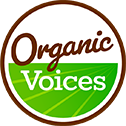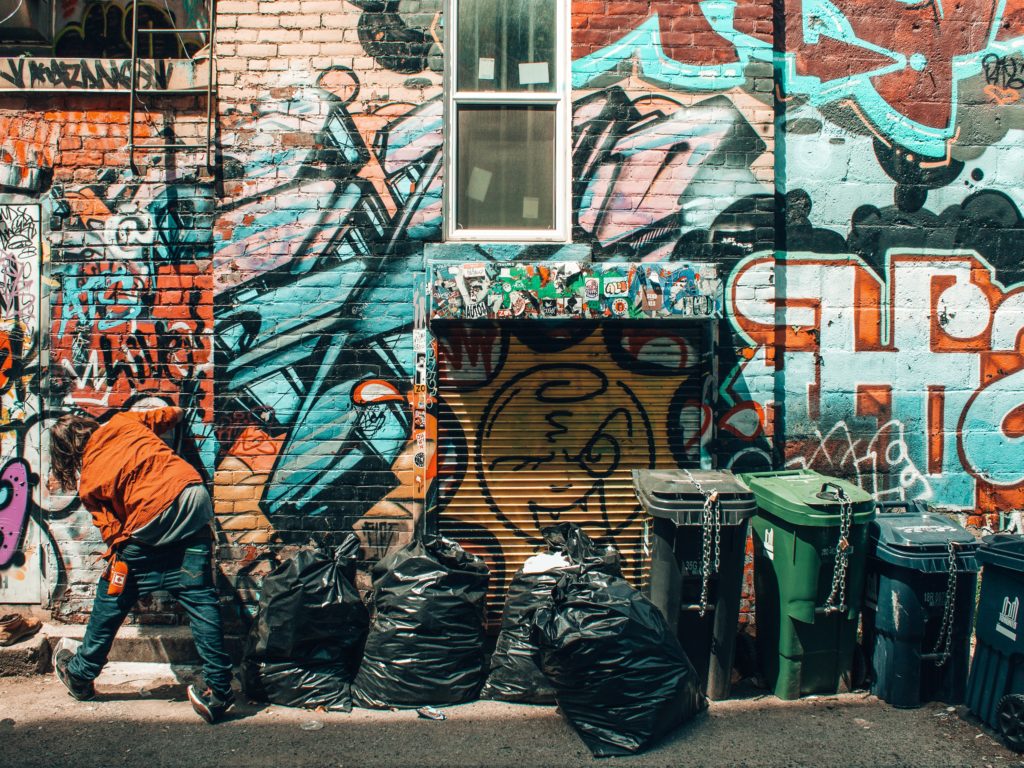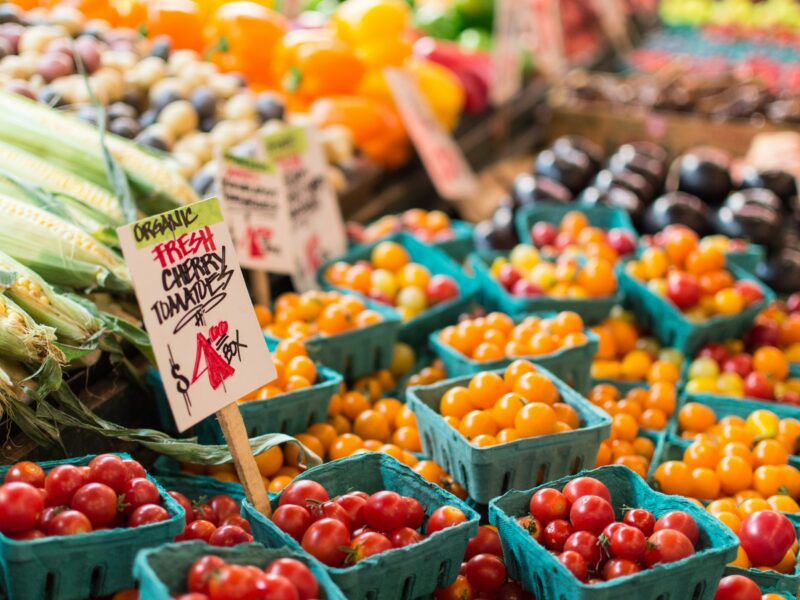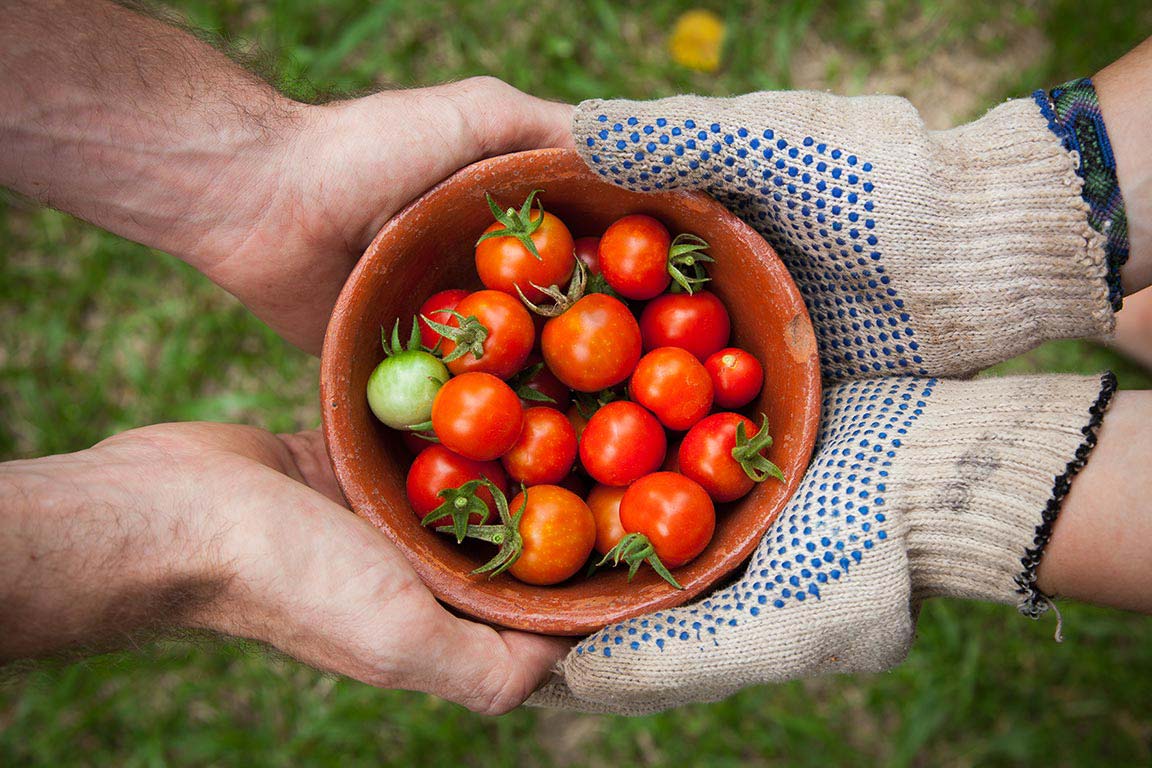At Only Organic, we focus on skipping the chemicals and purchasing organic products, but there’s more we can do in our daily lives to reduce waste and help the environment.
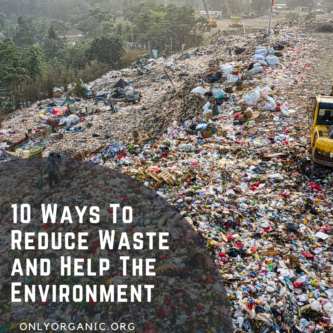 Most of us may consider ourselves to be adept at conserving and recycling, but the truth is the average American makes far more trips to the landfill than you might think. The end of winter is the time to declutter and donate as part of your spring cleaning.
Most of us may consider ourselves to be adept at conserving and recycling, but the truth is the average American makes far more trips to the landfill than you might think. The end of winter is the time to declutter and donate as part of your spring cleaning.
From clothing to décor, our excess can free up our space of stagnant energy and become a blessing to other people. If donating isn’t something you’re familiar with and you’re putting unwanted things in the trash instead, we’ll highlight why donating is always better than dumping.
In today’s blog, we’ve identified 10 ways to reduce waste and help the environment by making small changes in your daily routine.
According to the Environmental Protection Agency, it costs on average $45 per ton to dispose of waste in a landfill. Here’s a glance at what makes up some of the waste in landfills.
- Food is 22% of landfill waste.
- Textiles make up 7.6% of landfill waste.
- Plastics are 18.9% of landfill waste.
- Paper and Paperboard make up 13.3% of landfill waste.
- Metals are 9.5% of landfill waste.

Careless consumption and excessive landfill waste are major contributors to climate change. In fact, the EPA states that “every stage of a product’s life cycle – extraction, manufacturing, distribution, use, and disposal – indirectly or directly contributes to the concentration of GHGs in the atmosphere and affects the global climate. For instance, product manufacturing releases GHGs both directly, from the manufacturing process, and indirectly, from the energy produced to run the plant. Extraction and distribution require gasoline-powered vehicles that release CO2.” Discarded products typically end up in a landfill, which releases methane as products decompose.
Since waste is such a big contributor to climate change, here are 10 simple ways to make an impact with your daily choices.
1. Compost all organic matter, rather than throwing it away in the garbage.
A major concern in landfill waste is fresh food scraps. Composting is an easy and natural process that takes kitchen waste and turns it into nutrient-rich food for the soil that helps your plants grow. The EPA states that “organic waste in landfills generates, methane, a potent greenhouse gas. By composting wasted food and other organics, methane emissions are significantly reduced.”
If you’re reducing organic foods in your pantry or refrigerator as part of your decluttering process, consider starting a compost, joining a composting program, or feeding some neighborhood farm animals with organic food matter.
The great thing about this process is the compost you make during the winter can help your spring and summer garden grow. In fact, “food is the single largest category of material placed in municipal landfills. Municipal solid waste landfills are the third-largest source of human-related methane emissions in the United States.” Keeping food waste and organic matter out of the garbage is one of the most important and necessary changes to commit to in support of climate health.
Review this USDA infographic for a visual display of how important composting is and why your commitment to it matters.
2. Donate food to food banks or local charities.
Since food is one of the largest contributors to landfills, consider donating excess food to help those in need. If you are gardening and can’t eat all your harvest, donating to your community will keep the neighbors healthy and the landfills free of excess food.
When you’re cleaning out pantries, freezers, or finding food still safe for consumption that won’t be used before the expiration date, consider donating them to a food bank. The average family of four spends $1,500 each year on food that ends up uneaten. Planning your meals and buying only what you’ll use is not only cost-effective but also helps reduce the amount you will waste. It’s estimated that if we donated a small percentage of our uneaten food, millions of hungry people would be fed.
3. Donate clothing and textiles to a charity or thrift store.
Another major contributor to waste in our landfills is textiles, especially clothes, which sit in a landfill releasing toxic greenhouse gases like carbon dioxide and methane into the environment when they decompose.
The EPA reports that Americans generate 16 million tons of textile waste a year – just over seven percent of total municipal waste. It’s estimated that the average amount of exported used clothing is 700,000 tons and 2.5 million tons of clothing per year are recycled. But more than three million tons are incinerated, and a staggering 10 million tons get sent to landfills.
Some materials take longer than others to decompose, but they all harm the environment. Besides releasing gases like methane, most fabrics are made with dyes and chemicals that can contaminate the soil and water.
Ninety-five percent of textiles can be recycled and repurposed, so don’t throw away any textiles, not even socks full of holes. You’d be shocked to see what textiles can be recycled into, including sports fields, pillow stuffing, and paper money.
If clothing doesn’t sell at the thrift store, it gets sent to textile recycling centers where it will be cut into rags, processed into softer fiber used for filling furniture and building insulation or sent overseas.
Fifty-four percent of North Americans said they threw away unwanted clothing or household goods. When asked why they chose to toss items, 62% said they didn’t think any donation center would take them, and nearly one in five didn’t know what to do with them. But the items we no longer use can be used by somebody else. In fact, 70% of the world wears secondhand clothing.
Find the closest recycling or donation center near you with this useful search tool from the Council for Textile Recycling.
4. Buy used clothing at thrift, charity, or consignment stores.
Did you know making new clothes takes hundreds of gallons of water, and producing new textiles accounts for 10% of all carbon emissions on the planet? Consider purchasing clothing at a thrift or consignment store rather than purchasing something new. Not only does this help contribute to more circular textile industry, but it also saves you money and benefits a charity.
For instance, shoes are one of the slowest decomposing items, taking more than a thousand years to break down, thanks to a commonly used material called ethylene-vinyl. Buying shoes with these materials should be a conscious choice and offering these to thrift stores or as hand-me-downs will make a huge impact. Clothing takes up to 40 years to break down so consider shopping at your local thrift store and repurpose those low-waisted jeans that are now in style again.
In 2013, the EPA estimated that “2.3 million tons of textiles were recycled, thus avoiding disposal.” The EPA says the environmental impact of this number is the same as taking 1.2 million cars off the road.
5. Buy certified organic textiles from brands committed to using natural fibers
When purchasing textile products, it’s easy to forget the process of growing the fiber, manufacturing, processing, designing, producing, and distribution. We see a shirt we like, and we buy it. But what you put on your body is just as important as what you put in your body. It’s important to remember that our skin is our largest organ and primary organ for absorption. So it makes sense to buy products that are clean and free from harmful chemicals so our skin is not absorbing these toxins.
In organic textiles, there is a certification process similar to USDA’s organic certification for food. Organic clothing, sheets, and blankets are made from materials raised in or grown in compliance with USDA organic agricultural standards. As you may know, there are strict regulations around organic crops. That means any crop used in organic textiles must comply with these regulations, just like any organic food product. Organic clothing may be composed of cotton, jute, silk, ramie, or wool, and the same crops can be used in organic textiles for the home such as sheets, towels, and bedding.
The Global Organic Textile Standard (GOTS) certification extends beyond the farm, all the way to the finished product. A certified organic textile product must meet stringent milling, processing, dyeing, printing, and labor standards. Low-impact dyes and inks must be used, wastewater treatment must exist onsite, and workers are ensured safe working conditions and a living wage.
In fact, every GOTS purchase you make improves your own health, the health and livelihoods of farmers and workers, biodiversity, air, water, and soil quality. Everyone wins, and these items are less likely to end up in a landfill because they are much easier to recycle into other fabrics. Natural fibers are easy to repurpose and take less energy to turn into new products.
If organic textiles are a new idea for you, use our organic textile guide to find products from our supporting brands, such as Patagonia, Pact, Delilah Home, Naturepedic, YES AND, Farm to Home, Seed to Style, MetaWear, and many more.
6. Buy textiles from brands committed to using recycled materials.
In addition to organic brands, there are also brands committed to using recycled materials in their goods. For example, Patagonia sells clothing made with recycled down, wool, and polyester. Even the labels and zippers in these items contain up to 80 percent reclaimed material. These companies also offer warranties on their clothing and will repair them for a lifetime.
Why does buying recycled materials help?
Recycling textiles can keep materials out of landfills and incinerators as well as reduce the need for new fibers by extending the life of existing ones. According to Secondary Materials and Recycled Textiles (SMART):
“Textiles are sorted by material type and color. Sorting by color means that no re-dying would need to take place, which saves energy and dyes. The textiles are then shredded. Zippers and buttons are removed from the shredded piles using magnets. Natural textiles, like cotton or wool, are cleaned and mixed through “carding,” a mechanical process that passes fibers between moving surfaces to break up locked clumps of fiber and aligns individual fibers to be parallel to each other. The product is then re-spun into yards of threads and ready to be used for weaving or knitting into new products.” Respinning natural fibers is an environmentally friendly way of recycling clothing.
SMART states that “Synthetic fibers, such as polyester or acrylic, are processed into polyester chips, which are essentially plastic pellets that become polyester again. The chips are melted and spun into new filament fiber for new polyester fabrics.”
Looking for products that are contributing to a healthier planet by recycling is another easy step to reduce the waste that ultimately is overtaking our landfills. In short, purchasing organic natural fibers can be recycled into new products easier and with fewer resources. Today you can find many products made from recycled textiles from yoga clothing made from plastic bottles or couches upholstered with recycled textiles.
7. Purchase products that don’t require excess packaging.
You’ve probably been to stores that package the smallest item in a plastic package, either for single-use serving or to keep it fresher longer. (We’re looking at you, Trader Joe’s.) Put simply, buying food with less packaging means less waste. Buying produce using reusable bags, for example, is just one way to reduce excess packaging. Buying food from bulk bins can save you money and reduce food waste and packaging since you can buy the amount of food you need as opposed to a set amount. You can also purchase from buying clubs, which in turn saves you money on the bulk purchase while also reducing the packaging waste.
8. Clean your home with clean, safe reusable products.
Did you know that many home-cleaning products are not regulated and contain dangerous chemicals that end up contaminating our environment once flushed or discarded? If you’re using a product that claims it is a disinfectant or antibacterial, it likely has a pesticide in it or a chemical of concern. In our spring cleaning blog, we highlight the chemicals of concern, as well as some solutions for reducing toxic waste in our landfills. Single-use plastic of any kind is also a major concern when it comes to cleaning. Even if it’s been recycled, plastic is a huge contributor to the waste problem we will face for generations. Oftentimes producers will opt for new plastic bottles rather than using recycled materials because the cost is cheaper. Using single-use plastic cleaning bottles to clean your home adds to the waste problem.
One solution to cutting down on the plastic and chemical waste is to use a concentrated cleaning kit from Branch Basics, which supplies a natural concentrated solution and refillable glass bottles. They have starter kits that contain one solution laundry, dishes, floors, windows, and even bathrooms. You can also buy cleaning products in bulk from your local grocery store or co-op and use bottles at home. The key is to stop using single-use plastic bottles and harsh chemicals that harm our environment.
9. Eat fresh organic food from local farms.
When you purchase food not grown locally, there is a lot of waste, from losses during production and harvest to postharvest handling and storage losses to distribution and retail losses. Fresh food is perishable, so losses are just a part of doing business.
One of the most important reasons to buy your organic locally is to lower the fossil fuel costs involved in transporting it. Think of the boxes, packages, refrigeration packs, and so much more when food is shipped from one location to the next. Most produce travels about 1,500 miles from farm to plate, and this long-distance, large-scale transportation of food consumes large quantities of fossil fuels – about 10 times the amount of energy derived from fossil fuels as the energy we get from the food itself, according to Cuesa.
And it’s not just the continued reliance on fossil fuels, with their effects on the climate. There are also the extra measures involved in bringing something to market that’s not local. For example, produce destined to be shipped and kept shelf-stable must typically be picked before it’s ripe and then gassed to “ripen” it after transport. When a product is not ripe, tasty, or esthetically pleasing, it won’t get sold. This process creates lots of food waste.
Eating locally with the seasons is not only better for you but is also the most effective way to save money on organic food and help offset the energy costs of transporting food out of season. Essentially when we connect to the organic grower of your food the farmer can better match supply and demand thus shortening the path from farm to table (which in and of itself reduces waste), and we allow for other outlets like donating, buying clubs like CSAs, composting or feeding farm animals.
Locally grown food also has a much longer shelf life because it hasn’t traveled around the world to get to you. By the time it ripens, you might not be ready to use it in your food. (We’re looking at you, avocados.) The little shift to buying local organic means that less food gets wasted thus less methane-producing food waste ends up in landfills.
10. Consider purchasing imperfect organic foods.
Purchase “imperfect produce” or “upcycled products” from your local producers. Imperfect produce may have physical imperfections but is just as safe and nutritious and can sometimes be found at discounted prices. Upcycled products are made from ingredients that might have otherwise gone to waste, like prepared foods such as salsa, jam, and other item made by farmers to extend the usefulness of the harvest.
We recommend buying locally, but delivery services help those who don’t have affordable access to local organic food. If you’re unsatisfied with the local offering, price, or availability of organic in your community, a produce delivery service can be a great option and some of them feature discounts for produce that isn’t “perfect” esthetically. Here are two ideas:
We hope this blog inspired you to take informed action and reduce waste with everyday solutions. As with all changes, we recommend tackling them one at a time to make the switch a consistent habit. Consider sharing this blog with a friend or family member to make an even larger impact.
